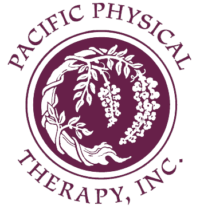BECOMING A PHYSICAL THERAPIST OR A PHYSICAL THERAPIST ASSISTANT
The following is an excerpt from the APTA Brochure “A Future in Physical Therapy”
A construction worker with an injured back … a senior citizen with arthritis … an infant with a birth defect … an Olympic athlete … a person who has had a stroke … a child with a disability … a pregnant woman… an overstressed business executive … a diverse group of people, yet each can benefit in some way from physical therapy.
Physical therapists have the rewarding opportunity to make a positive difference in the quality of people’s lives. Their work involves extensive contact with people–with both patients and other health care professionals. Physical therapy takes a personal and direct approach to meeting an individual’s health needs and wants, whether a patient’s goal is walking independently or breaking a high-jump record. Along with the patient and other health care practitioners, the physical therapist shares the hard work and commitment needed to accomplish each individual patients goals.
For people with health problems resulting from injury or disease, the physical therapist assists in the recovery process — making them stronger, relieving their pain, and helping them to regain use of an affected limb or to reclaim such activities of daily living as walking, dressing, or bathing. Because recovery does not end for patents as soon as they are out of the physical therapists direct care, physical therapists must teach patients and their families what to do so that healing continues through self care at home.
Physical therapists also seek to keep people well and safe from injury. They do this by teaching the importance of fitness and showing people how to avoid hurting their bodies at work or play. By designing and supervising individualized conditioning programs, physical therapists promote optimal physical performance and help health-conscious people to increase their overall fitness level and muscular strength and endurance.
A Variety of Possibilities
Physical therapists are respected members of the health care team. They work with other health care providers, such as physicians, occupational therapists, rehabilitation nurses, dentists, psychologists, social workers, podiatrists, speech pathologists, and audiologists.
Physical therapists can be found in private physical therapy offices, hospitals, rehabilitation centers, community centers, nursing homes, home health agencies, corporate or industrial health centers, sports facilities, research institutions, schools, pediatric centers, and colleges and universities. Some physical therapists work as employees in these settings, while others are self-employed as owners or partners in private practices. Settings, employment arrangements, career responsibilities, and career opportunities depend on the interests and skills of each practitioner.
The Physical Therapist
Students pursuing a career in physical therapy enter the profession with either a master’s or a doctor’s degree. The American Physical Therapy Association (APTA) believes this level of education will prepare physical therapist to better meet the expectations of the profession, fulfill the changing needs of today’s patients, and participate in tomorrow’s progressive health care system.
Physical therapists attain their prerequisite skills through extensive academic and clinical education. Preparation for entrance into a physical therapist education program includes courses in psychology, biology, physics, chemistry, statistics, English, professional writing, and humanities. In other words, the pre-physical therapy college curriculum should include a strong background in liberal arts and general education. AU professional programs include basic and clinical medical science courses and emphasize the theory
and practice of physical therapy. The curriculum includes opportunities to apply and incorporate theory through extensive clinical education in a variety of Practice Settings.
The Physical Therapy Assistant
Physical therapist assistants work under the supervision of a physical therapist. Their duties include assisting the physical therapist in implementing treatment programs according to the plan of care, training patients in exercises and activities of doily living, conducting interventions, using special equipment, administering modalities and other intervention procedures, and reporting to the physical therapist on the patent’s response.
Physical therapist assistants must complete a 2-year education program, usually offered in a community or junior college. The course of study includes 1 year of general education and I year of technical courses on physical therapy procedures and clinical experience. Graduates receive an associates degree.
Licensure or registration is not required in all states for the physical therapist assistant to practice. The states that require licensure stipulate specific and examination criteria. Complete information on practice acts and regulations can be obtained from the state licensing boards.
